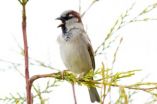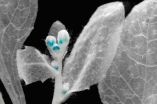(Press-News.org) A new study into Staphylococcus aureus, the bacterium which is responsible for severe chronic infections worldwide, reveals how bacteria have developed a strategy of hiding within host cells to escape the immune system as well as many antibacterial treatments. The research, published by EMBO Molecular Medicine, demonstrates how 'phenotype switching' enables bacteria to adapt to their environmental conditions, lie dormant inside host cells and become a reservoir for relapsing infections.
Staphylococcus aureus is a major human pathogen which can be carried by up to 70% of healthy people, and can lead to conditions such as deep tissue infections, osteomyelitis, and chronic lung infections, which are often hard to treat with antibiotics. A key characteristic of these infections is that relapses can occur months or years after an apparent cure.
These relapses, Dr. Bettina Löffler and her team from the Institut für Medizinische Mikrobiologie in Münster, Germany, believe are due to phenotype switching, a change in the bacterial behaviour. After infection and invasion of the patient's host cells, the bacteria form small colony variants (SCVs), tiny bacterial subpopulations that can evade the immune system as well as many antibiotics and grow slowly.
"For the microbiologist, it is difficult to detect SCVs in clinical specimens as they grow slowly, often needing several days to form and so can be easily overlooked in diagnosis," said Löffler. "Our study asked two questions: Is the development of SCVs an integral part of the infection process and what are the dynamics of SCV formation?"
The team performed long-term infection studies with Staphylococcus aureus in cell culture systems and also analysed tissue samples from subacute and chronic human infections.
The research revealed that in all infection models, the bacteria were able to persist within the host for several weeks after the infection, leading to the formation of SCV colonies. This showed that SCVs began to appear following infection, after the immune system response was overcome and that this persistence led to a larger phenotypic diversity of bacteria.
"These studies demonstrate that S. aureus are extreme versatile microorganisms that continuously sense their environmental conditions and can rapidly alter to reflect them," said Löffler. "The formation of SCV colonies is a bacterial phenotype switching strategy which is an integral part of the infection process."
This process enables the bacteria to hide inside host cells without provoking an inflammatory response from the host's immune system. In addition, they might be efficiently protected from antibiotic treatment.
"This strategy means that SCVs can be considered as 'dormant forms' of infections which can rapidly regain their full virulence and cause a patient to relapse," concluded Löffler. "This has important clinical implications as it means that targeting phenotype switching could prevent the bacteria from hiding, making the infection more vulnerable to host response and treatment."
INFORMATION: END
Some animals produce more offspring than others do. Hormones like prolactin and corticosterone can exercise a crucial influence on the behaviour of birds in the breeding season and therefore on their reproductive success. Scientists from the Max Planck Institute for Ornithology in Radolfzell and their colleagues at the universities of Princeton and Edinburgh have now demonstrated that hormone levels not only play a key role during the breeding season, but already dictate, long in advance, how many eggs a breeding pair will lay, when they will lay them and how often. An ...
Plants producing flower pollen must not leave anything to chance. The model plant thale cress (Arabidopsis), for instance, uses three signalling pathways in concert with partially overlapping functions. The yield becomes the greatest when all three processes are active; however, two are sufficient to form an acceptable quantity of flower pollen. In a new study, Peter Huijser and his colleagues at the Max Planck Institute for Plant Breeding Research in Cologne offer fascinating insights into the rich range of proteins that are used by seed plants to develop stamens and form ...
As many as ten to 20 per cent of nurses and nursing students may have substance abuse and addiction problems, but the key to tackling this difficult issue - and protecting public safety - is support and treatment, not punishment. That is the key message in a paper in the February issue of the Journal of Clinical Nursing.
Researchers have recommended six key points that could be built into alternative-to-dismissal (ATD) strategies after reviewing the latest research and professional guidance from countries such as the USA, Canada, New Zealand, Australia and the UK.
They ...
The temperature of water situated in the subtropical Atlantic experienced a drop of 0.15ºC between 1998 and 2006. This has been revealed by a study led by the IEO (Spanish Oceanography Institute) which suggests that circulation caused by wind could be responsible for this "unusual" behaviour.
Whilst the water temperature in this area, situated along the 24.5º north parallel, from the African coast to the Caribbean, rose by 0.27ºC between 1957 and 1998, researchers have recorded a drop of 0.15ºC in the same area between 1998 and 2006.
"In the ocean there are very ...
'Difficult' patient-clinician encounters have a negative impact on patients' health outcomes in the short-term, according to a new study by Sheri Hinchey from the Tripler Army Medical Centre in Honolulu and Jeffrey Jackson from the Zablocki VA Medical Centre in Milwaukee. Their findings1 show that nearly 18 percent of patients are perceived as difficult by their physicians and are less likely to trust or be satisfied with their doctor. Importantly, these patients are also more likely to report worse symptoms two weeks after the consultation. Hinchey and Jackson's work has ...
For 60 years, scientists have puzzled over the possibility of a hepatic osmoreceptor that influences blood pressure regulation. Now, researchers of the Max Delbrück Center for Molecular Medicine (MDC) Berlin-Buch, the Experimental and Clinical Research Center (ECRC) of the MDC and Charité and the Hannover Medical School (MHH) appear to have made a breakthrough discovery. Dr. Stefan Lechner and Professor Gary R. Lewin (both of MDC), Professor Friedrich C. Luft (ECRC) and Professor Jens Jordan (ECRC; now MHH) have discovered a new group of sensory neurons in the mouse liver ...
Tel Aviv — The most common connective tissue cell in animals is the fibroblast, which plays an important role in healing wounds. But Dr. Neta Erez of Tel Aviv University's Sackler Faculty of Medicine has now demonstrated that fibroblasts can also do a body great harm, helping to "recruit" immune cells for tumor growth.
At the onset of a tumor's creation when cancer cell proliferation is beginning, fibroblasts rush to the scene to aid in healing. However, Dr. Erez's research shows that these ordinarily helpful cells can actually be turned against the body, enhancing ...
The operating system (OS) is the backbone of your computer. If the OS is compromised, attackers can take over your computer – or crash it. Now researchers at North Carolina State University have developed an efficient system that utilizes hardware and software to restore an OS if it is attacked.
At issue are security attacks in which an outside party successfully compromises one computer application (such as a Web browser) and then uses that application to gain access to the OS. For example, the compromised application could submit a "system call" to the OS, effectively ...
Massachusetts General Hospital (MGH) investigators have developed a novel system for delivery of growth factors to chronic wounds such as pressure sores and diabetic foot ulcers. In their work published in the Jan. 18 Proceedings of the National Academy of Sciences, the team from the MGH Center for Engineering in Medicine (CEM) reports fabricating nanospheres containing keratinocyte growth factor (KGF), a protein known to play an important role in wound healing, fused with elastin-like peptides. When suspended in a fibrin gel, these nanoparticles improved the healing of ...
This press release is available in French.
Montreal, January 26, 2011 – Not all trout are created equal. Those swimming up the streams of British Columbia might resemble their cousins from Quebec, yet their genetic makeup is regionally affected and has an impact on how they reproduce, grow and react to environmental stressors.
Such regional variance makes transplanting fish species – to bolster dwindling populations – tricky business. These are some of the findings of a compelling review published in Heredity, a journal from the Nature Publishing Group, which examined ...





